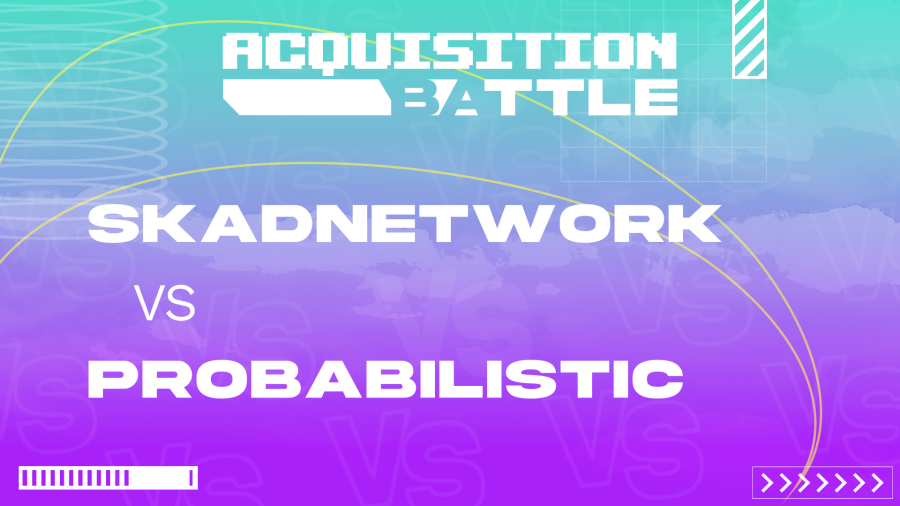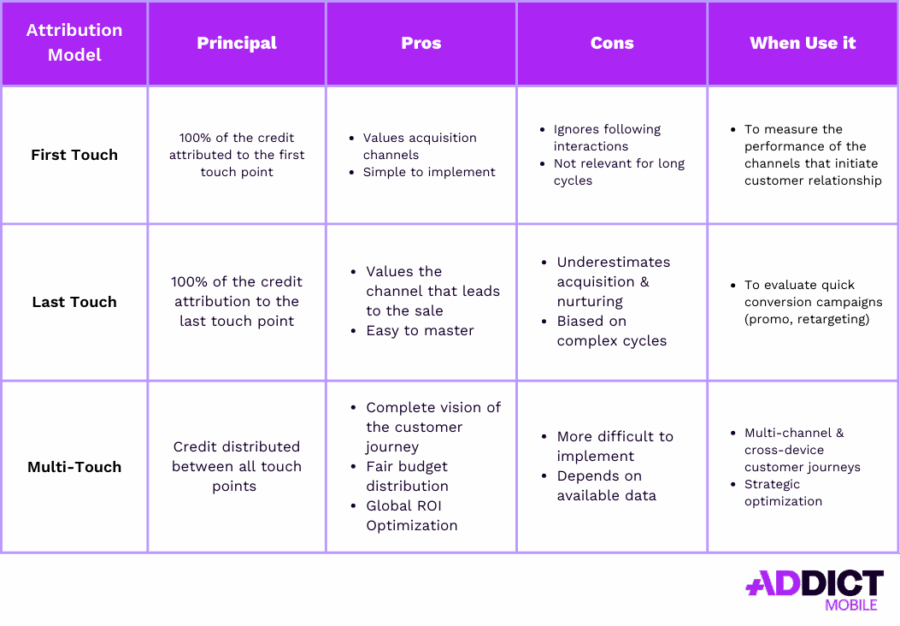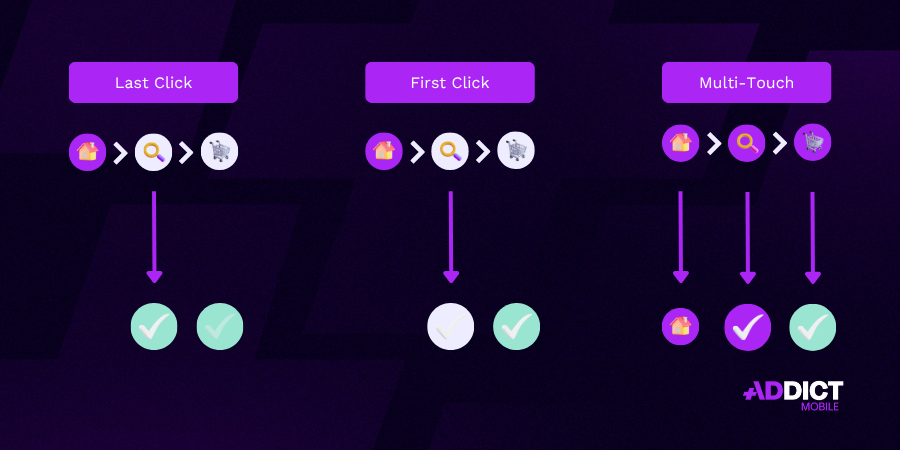Multi-Touch Attribution: The Complete Guide to Understanding and Optimizing Your Conversions
Introduction
Today, the customer journey is increasingly fragmented. A user may discover a brand through a social media ad, compare offers on Google, receive a newsletter, and finally make a purchase after clicking on a display ad.
In such a context, relying solely on first touch or last touch to assign the conversion is limiting and often leads to poor marketing decisions.
This is where multi-touch attribution (MTA) comes in. This model assigns value to every interaction that contributed to the conversion, providing a more realistic view of the customer journey and channel performance.
What Is Multi-Touch Attribution?
Definition
Multi-touch attribution is a marketing analysis model that distributes the value of a conversion across several touchpoints. Instead of crediting a single channel (as in first touch or last touch attribution), multi-touch acknowledges that a conversion is the result of a sequence of interactions.
Example:
- A user sees a Facebook ad (first touch),
- Then clicks on a Google Ads campaign (second touch),
- Subscribes to a newsletter and receives a promotional email (third touch),
- And completes the purchase after seeing a display ad (fourth touch).
In a traditional last touch model, only the last touchpoint would receive 100% of the credit. With multi-touch, each interaction is credited with part of the success.
How Does It Work?
The process relies on data tracking and algorithmic models. Analytics tools (Google Analytics 4, attribution platforms, CRMs) collect data from every interaction: clicks, impressions, email opens, website visits, etc.
Then, depending on the chosen model (linear, U-shaped, W-shaped, time-decay…), the system assigns a weight to each touchpoint. This allows advertisers to measure the true influence of each channel on the final conversion.
When to Use Multi-Touch Attribution?
Multi-touch attribution is relevant in several cases:
- Long customer journeys: B2B, e-commerce with high-value baskets, or services requiring several decision steps.
- Multi-channel strategies: when the company uses SEA, SEO, email, social media, retargeting… simultaneously.
- Budget optimization: to determine which channels deserve reinforcement or downsizing.
Advantages of Multi-Touch Attribution
- Holistic view: understanding the entire path leading to conversion.
- Fair budget allocation: avoiding the overvaluation of a single channel.
- ROI-driven optimization: investing where the real impact is.
- Strategic decision-making: adjusting media mixes and campaigns with precision.

To go further
And fully understand mobile attribution,
Discover our dedicated Acquisition Battle: SKAN vs Probabilistic.
Multi-Touch Attribution Models
Not all multi-touch attribution models assign value the same way. The most common include:
U-Shaped Model
40% of credit goes to the first touch, 40% to the last, and the remaining 20% is shared among middle interactions.
👉 Best for analyzing both acquisition and final conversion drivers.
W-Shaped Model
The first, a key middle, and the last touchpoint each receive strong weight (often 30% each), with the remaining 10% distributed.
👉 Best for complex purchase cycles with multiple decision points.
Linear Model
Each interaction receives equal credit.
👉 Useful for brands seeking fairness and simplicity, though it lacks nuance.
Time-Decay Model
The closer the interaction to the conversion, the more weight it receives.
👉 Best for campaigns where the last push is decisive (retargeting, promotions).
Position-Based Model
A mix of linear and U/W: first and last touches get more credit, the rest is distributed among middle points.
Custom / Data-Driven Model
Leveraging machine learning, some platforms (Google, Meta, third-party solutions) automatically calculate weights based on real data.
👉 Most accurate but requires lots of data and a strong technical setup.
Multi-Touch vs Last Touch
Differences
- Last Touch: 100% credit goes to the last channel (often the one triggering the purchase).
- Multi-Touch: credit is distributed across the entire journey.
When to Use?
- Last Touch: useful for simple campaigns (e.g., flash promotions, short journeys).
- Multi-Touch: recommended for longer or cross-channel journeys to avoid overestimating end-of-funnel channels.
Multi-Touch vs First Touch
Differences
- First Touch: 100% credit goes to the channel that generated the first interaction.
- Multi-Touch: recognizes the value of the entire journey.
When to Use?
- First Touch: relevant to analyze acquisition channels and measure awareness impact.
- Multi-Touch: ideal for optimizing the entire marketing funnel, not just the first step.
Summary: Which Model to Choose?
Multi-touch attribution provides a more complete and reliable analysis than first or last touch.
- Models vary depending on the objective: acquisition, conversion, retention.
- The more granular the data, the more relevant the marketing decisions.
Attribution Model Overview



Do not hesitate to contact with our teams
Addict can support you to improve your performance.
Current Challenges of Attribution
Despite its relevance and efficiency, multi-touch attribution faces numerous challenges. These don’t diminish its value but highlight the growing complexity of measurement in modern digital marketing.
The End of Third-Party Cookies
Third-party cookies allowed advertisers to track user behavior across websites. With their phase-out (by Safari, Firefox, and soon Chrome), tracking full customer journeys and linking interactions is harder.
👉 Consequence: marketers must adopt first-party tracking and alternatives like AI, universal IDs, or statistical models.
Cross-Device Tracking
Modern consumers use multiple devices: discovering a brand on mobile, comparing on tablet, purchasing on desktop.
👉 Challenge: connecting all interactions to the same individual (via logins, unified accounts, CRM). Without reliable IDs, data remains fragmented.
Proliferation of Channels and Touchpoints
Customer journeys span SEO, SEA, organic/paid social, email, push notifications, price comparison sites, influencers, podcasts, digital OOH, etc.
👉 Challenge: assigning fair value to each channel without overestimating some (e.g., retargeting).
Legal and Privacy Constraints
Regulations (GDPR, CCPA, Apple’s ATT) limit data collection and exploitation.
👉 Challenge: balancing user privacy with the need for reliable marketing data.
Technical and Analytical Complexity
Implementing multi-touch attribution requires:
- Advanced analytics tools,
- Integrations between ad platforms, CRMs, and visualization tools,
- Strong analytical expertise.
👉 Challenge: not all companies have the maturity or resources to implement it effectively.
💡 These challenges explain why some businesses still hesitate. Yet despite these constraints, multi-touch is one of the most popular models today, as it adapts to modern, multi-channel, and complex customer journeys.
Related Terms
To enhance understanding and SEO, here are commonly associated concepts and expressions.
Key Concepts
- Mobile attribution: method of assigning value to marketing channels.
- Data-driven attribution: attribution based on AI and historical data.
- Marketing funnel: mapping the customer journey from awareness to conversion.
- Customer journey mapping: charting touchpoints along the user journey.
Technical Tracking Terms
- First-party cookies: data stored directly by the advertiser’s website, essential in a cookieless world.
- Cross-device tracking: tracking a single user across devices.
- UTM tracking: URL parameters identifying traffic sources.
- Multi-channel analytics: analyzing performance across multiple channels.
Associated Strategies
- Omnichannel marketing: seamless integration of online and offline channels.
- ROI optimization: improving return on investment through smarter budget allocation.
- Conversion measurement: tracking key actions from campaigns (purchase, signup, download).
- Data marketing: leveraging data to drive marketing strategies.
Conclusion
Multi-touch attribution is much more than a tracking method: it is a strategic tool for modern marketers. By recognizing every interaction in the customer journey, it allows for smarter budget allocation, identification of key channels, and overall ROI improvement.
In a digital world where journeys are increasingly fragmented, multi-touch attribution has become an essential approach for managing an effective, truly data-driven marketing strategy.


